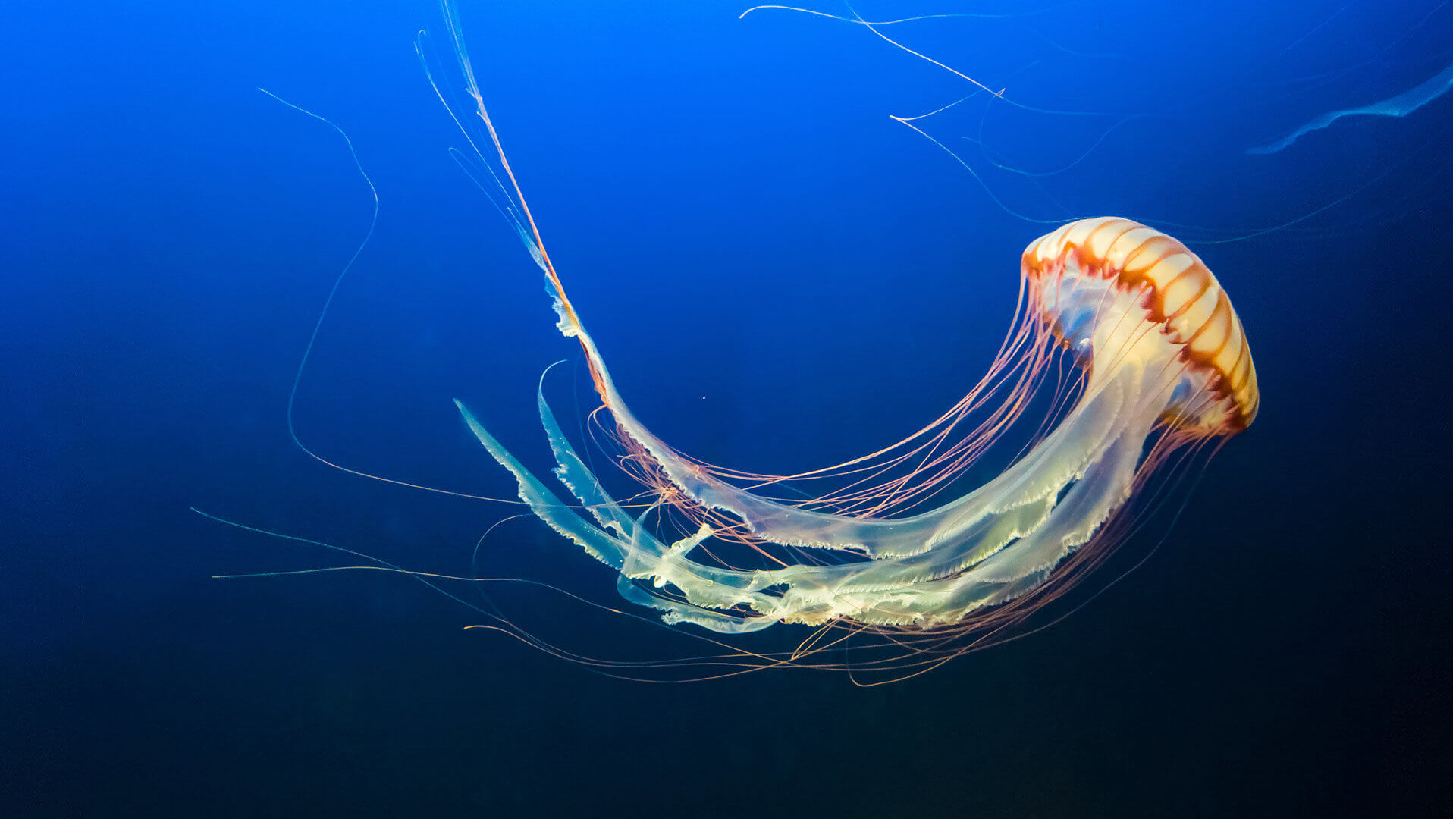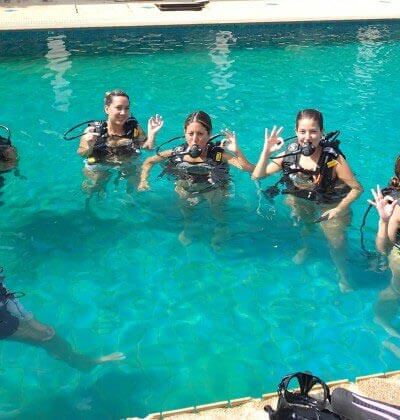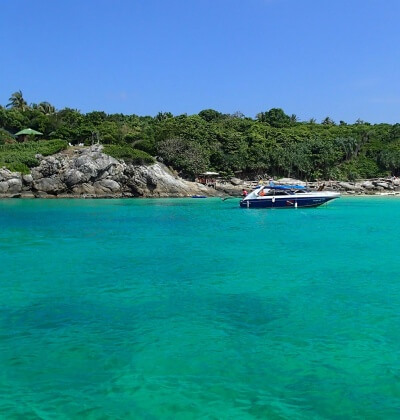What is the best way to treat a jellyfish sting?
Jelly fish sting are unfortunately part and parcel of diving and can ruin a days scuba diving. Luckily in most cases, self treatment is all that is needed and the effects will go away within 24-48 hours. In nearly all circumstances jellyfish stings are not life threatening and this is more so in Thailand.
Not all jellyfish are dangerous. Most people think that all gelatinous,swimming marine animal encountered at the sea are “jellyfish” and moreover that they all sting. But not all jellyfish are stinging; many are harmless to humans, but it is always best to avoid touching them.
However in Australian the Box Jellyfish (Cubozoans) and while not technically a jellyfish the Portuguese Man-of-War (Physalia spp.) are quite nasty. The Portuguese Man-of-War, is found Brazil, Mexico and the USA and sometimes around Australia, New Zealand and in parts of the Indian Ocean. Because of their propensity to cause systemic symptoms, Cubozoans and Physalia species are considered among the most dangerous cnidarians and will require hospital treatment.
What Happens When I am Stung
Writing for Scientific American Ciara Curtin explains the process of what occurs when we are stung by a jellyfish.
Jellyfish, those bulbous Medusa-like creatures, float near many of the world’s beaches. Some of the jellyfish’s skin cells are stinging cells, or cnidocytes. These specialized cells have organelles called nematocysts that contain venom. Cnidocytes are spread along the entire length of the jellyfish’s tentacles.
These tentacles can be so long that swimmers might not see the jellyfish that stings them, but they will certainly feel it. “The pain is instant,” says Joseph Burnett, a dermatologist at the University of Maryland Medical Center, who is part of the school’s Consortium of Jellyfish Stings, which tracks jellyfish injuries worldwide. Once stung, angry, red, whiplike lash marks mar the skin. The pain radiates from the sting site and starts to itch, burn and throb as it blisters. Scratching it, though, can make the pain worse, because rubbing activates the nematocysts, which release more venom.
Prevention
The use of lightweight dive skins or wetsuits provides adequate mechanical protection against jellyfish stings. If diving in waters known to have stinging jelly fish then covering up is the best solution.
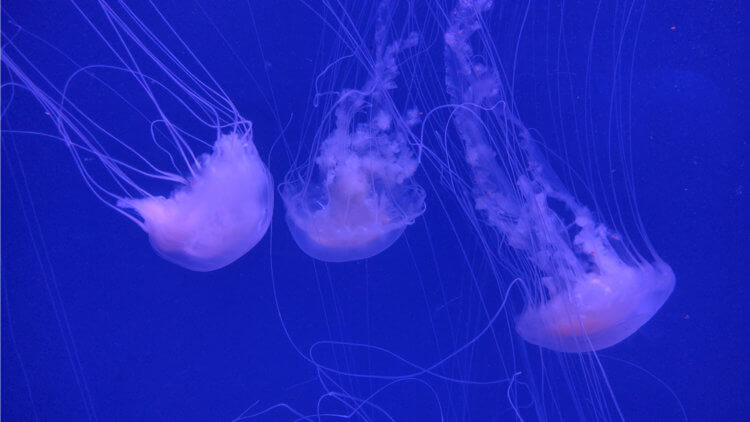
Jellyfish Aussie Divers Phuket
Does Urinating on jellyfish Stings really work?
For a long time there has been rumors that urinating on jellyfish sting can assist with the pain. Actually my old Italian grandmother believed that urine cured a lot including facial acne (I refused participate in trying that treatment).
Those a little skeptical will be relieved. Treating a jellyfish sting by urinating on it may actually cause someone even more pain, rather than relief. Urine can actually aggravate the jellyfish’s stingers into releasing more venom.
So what does work?
Here are DAN’s (Divers Alert Network) recommendations. The full list of recommendations are contained in this blog by DAN
Inactivation
Irrigate the area with generous amounts of household vinegar (4 to 6 percent acetic acid solution). This does not reverse the effects of venom or control pain, but may help to prevent further discharge of unfired nematocysts. If vinegar is not available then recommend washing the area with saltwater.
DO NOT USE FRESH WATER
Rinsing with freshwater will have the opposite effect. If freshwater is used the nematocysts in the cells release more venom and cause more pain.
Removal
Visible tentacles or filaments should be carefully removed with the aid of fine tweezers or protective barriers. Gloves, dive skins, women’s stockings or other thin material can provide enough protection to prevent envenomation of rescuers during tentacle removal.
Once rinsing deactivates all the nasty nematocysts, the attached bits of tentacle can be removed by coating them with shaving cream or seawater and sand followed by shaving with a razor or even a credit card.
Symptomatic treatment
Treatment usually consists of painkillers, anti-inflammatory medications and topical anesthetics.
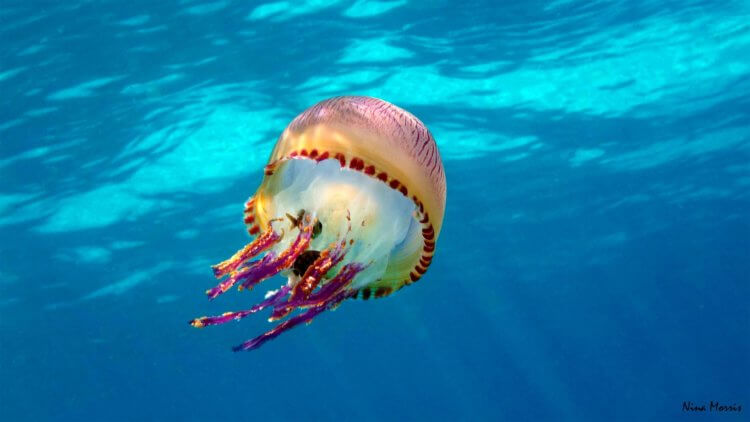
Jelly Fish Scuba Dive Aussie Divers Phuket Nina
Temperature
May help reduce pain. Immerse the affected area in hot water (113 °F / 45 °C) for 30 to 90 minutes (repeat as necessary). Local application of cold (if a hot water or hot pack are not available) can also provide pain reduction. Reports indicate that the application of heat may provide more effective pain relief than the use of cold, but cold packs should not be refused or avoided on this basis.
Test the water yourself prior to exposing it to the injured person. Envenomations may alter pain tolerance and in some cases may enable exposure to water hot enough to scald.
Steroids and Antihistamines
Use of topical steroids and antihistamines may be useful to reduce local swelling and possible allergic reactions.
Seek immediate professional medical attention in the case of severe systemic symptoms.
Should blistering occur, refrain from releasing the fluid or breaking the skin and simply allow them to heal naturally. Blisters may rupture, but this is not a cause for alarm, but does indicate a breech in the protective barrier of the skin and warrants keeping the area clean, dry and protected. Monitor for signs of infection until healed.
Posted in Diving Health on .

